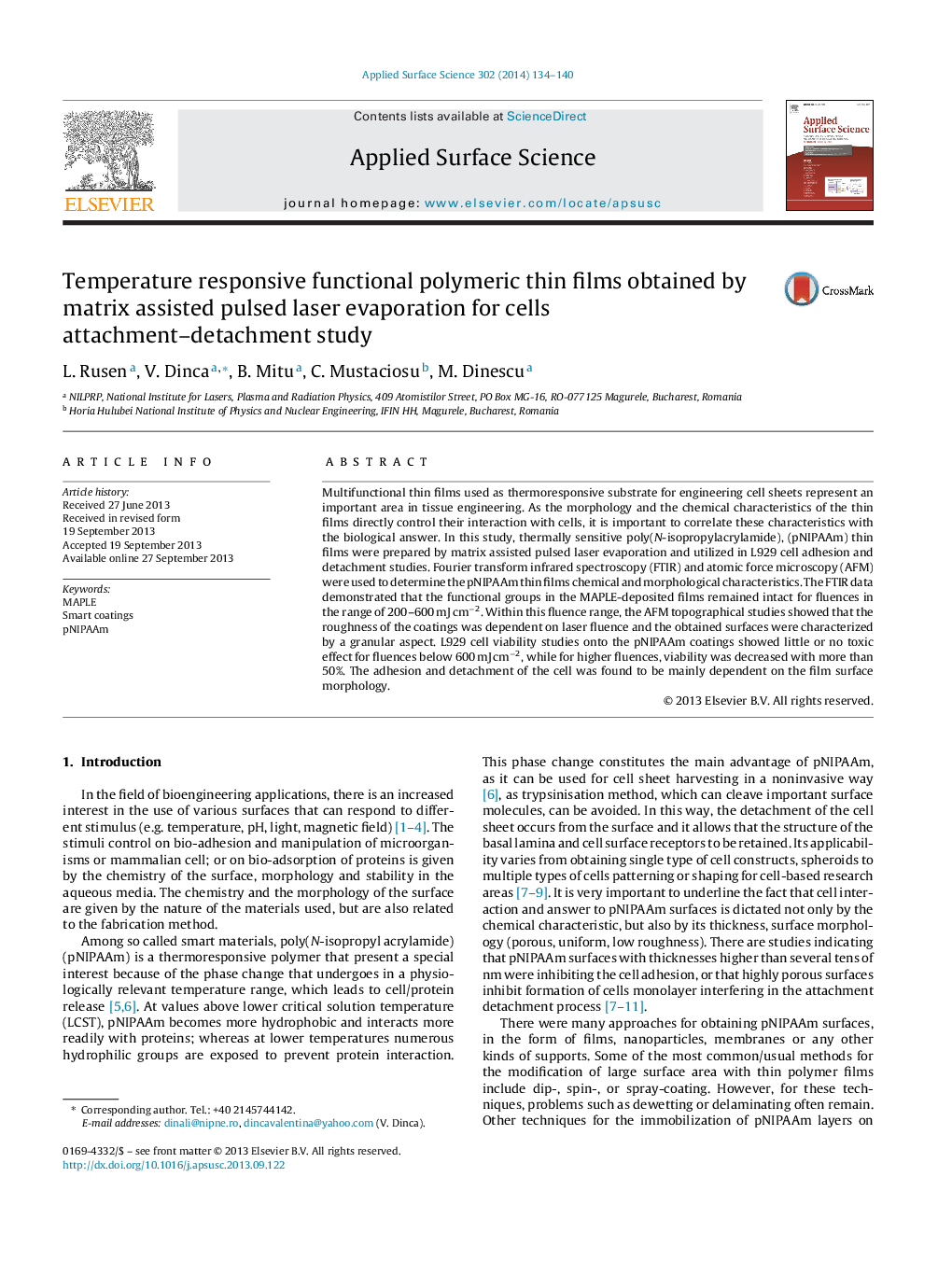| Article ID | Journal | Published Year | Pages | File Type |
|---|---|---|---|---|
| 5351614 | Applied Surface Science | 2014 | 7 Pages |
Abstract
Multifunctional thin films used as thermoresponsive substrate for engineering cell sheets represent an important area in tissue engineering. As the morphology and the chemical characteristics of the thin films directly control their interaction with cells, it is important to correlate these characteristics with the biological answer. In this study, thermally sensitive poly(N-isopropylacrylamide), (pNIPAAm) thin films were prepared by matrix assisted pulsed laser evaporation and utilized in L929 cell adhesion and detachment studies. Fourier transform infrared spectroscopy (FTIR) and atomic force microscopy (AFM) were used to determine the pNIPAAm thin films chemical and morphological characteristics. The FTIR data demonstrated that the functional groups in the MAPLE-deposited films remained intact for fluences in the range of 200-600Â mJÂ cmâ2. Within this fluence range, the AFM topographical studies showed that the roughness of the coatings was dependent on laser fluence and the obtained surfaces were characterized by a granular aspect. L929 cell viability studies onto the pNIPAAm coatings showed little or no toxic effect for fluences below 600Â mJÂ cmâ2, while for higher fluences, viability was decreased with more than 50%. The adhesion and detachment of the cell was found to be mainly dependent on the film surface morphology.
Keywords
Related Topics
Physical Sciences and Engineering
Chemistry
Physical and Theoretical Chemistry
Authors
L. Rusen, V. Dinca, B. Mitu, C. Mustaciosu, M. Dinescu,
